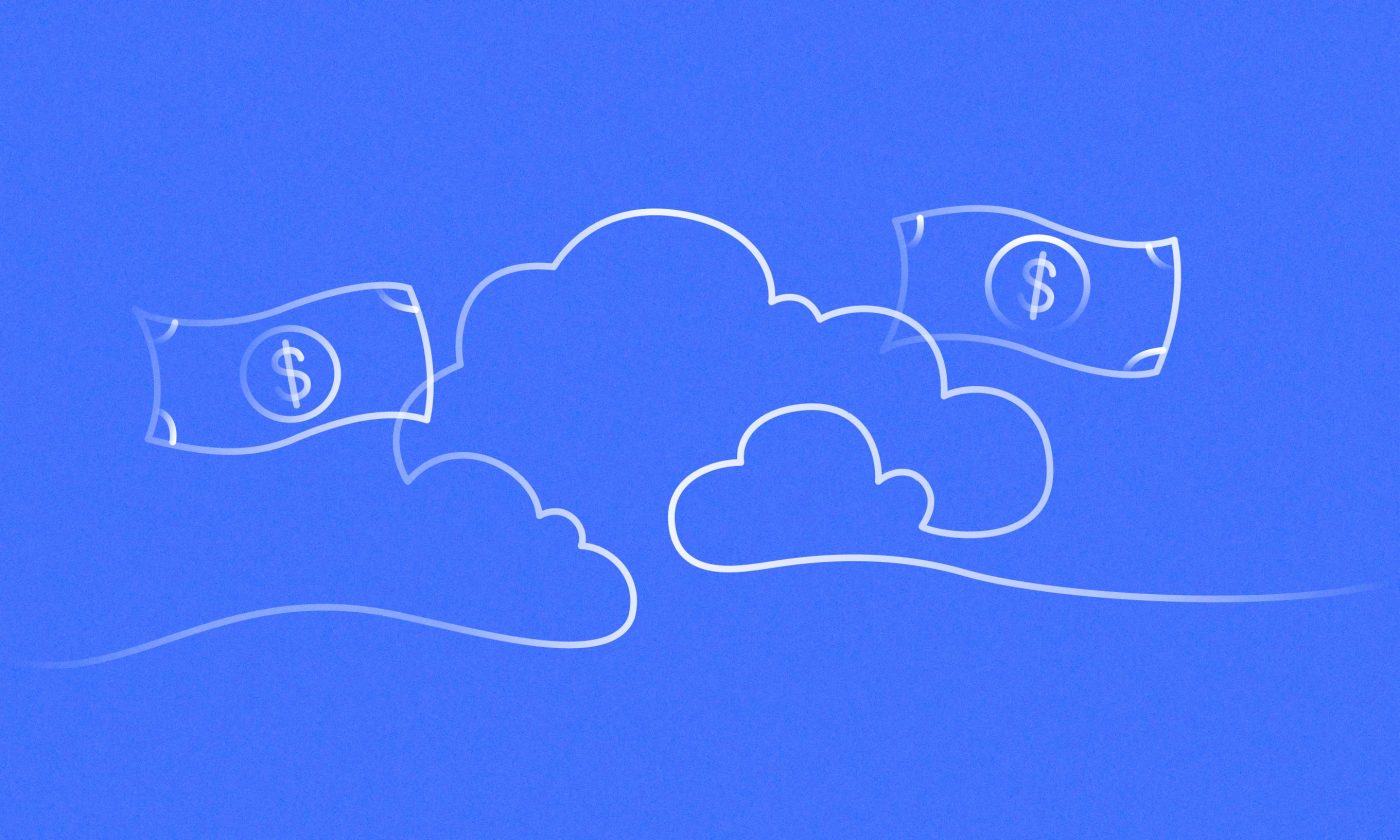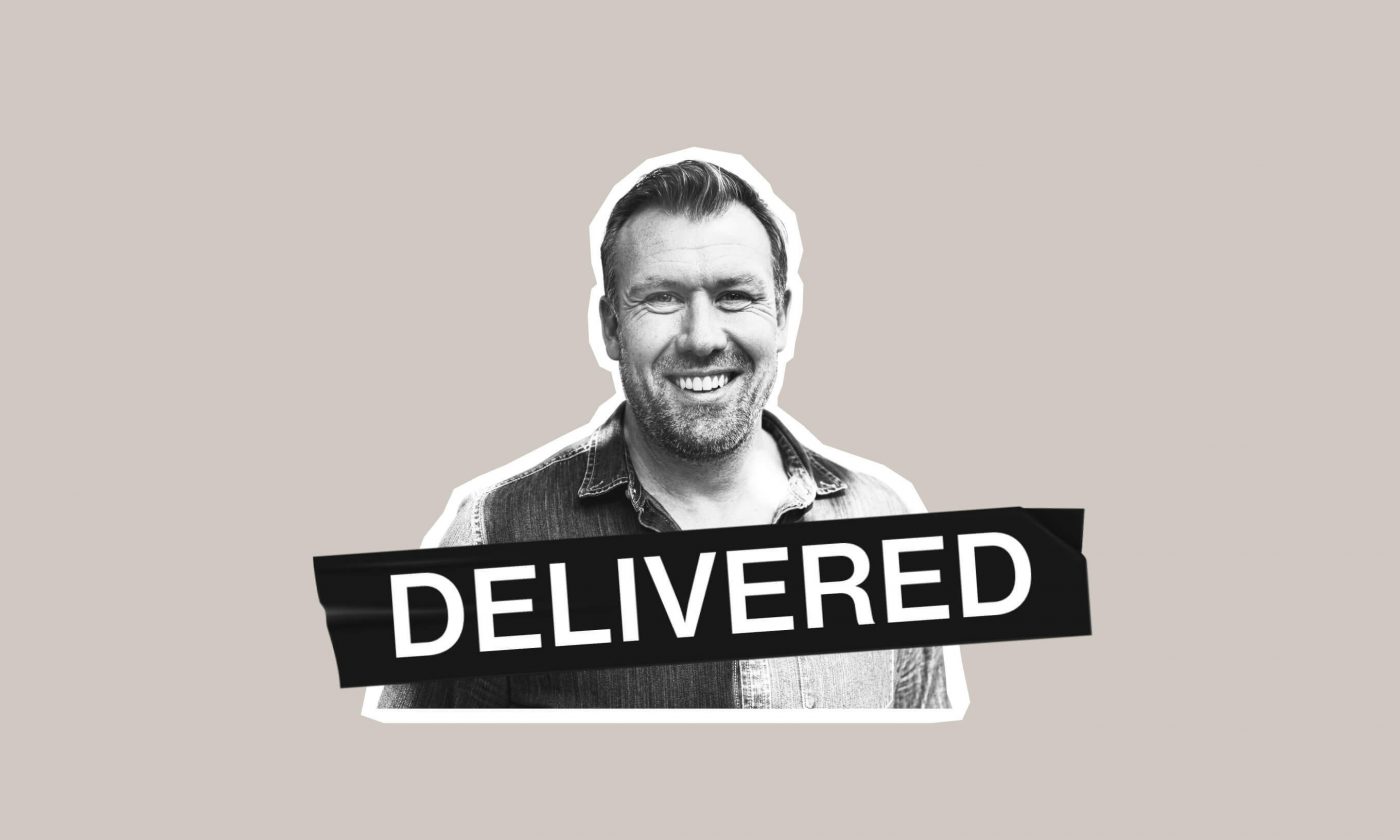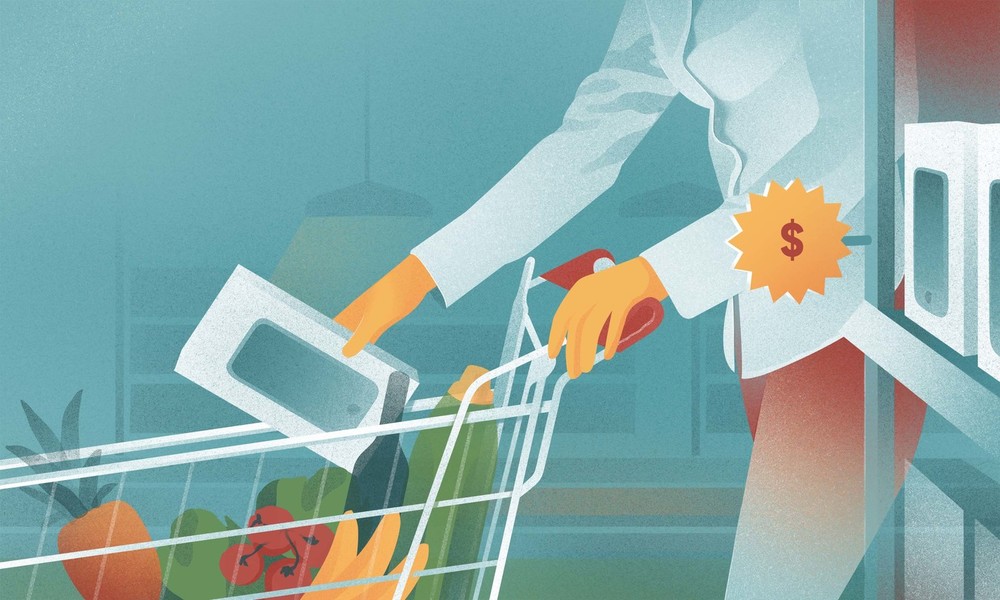We explore the concept of productization and uncover the value it offers to businesses and consumers alike. Discover why companies are shifting to a product-first approach and why productization is not a passing trend.
What do iPhone, Big Mac, MS Office, and Mailchimp have in common? They’re vital in shaping our experiences with their respective brands – how we form relationships with them. You don’t know Tim Cook personally, but you know the iPhone like the back of your hand (probably because it’s always in your hand).
Besides being a relationship touchpoint, these products also serve as a means by which companies provide value to us. Ultimately, what we’re paying for. They’re products – items a business can easily reproduce by repeating a production process. At the same time, customers know their price and the value they’re getting.
In this article, we’ll discuss productization with a particular focus on digital products. We’ll also provide some well-known examples and uncover the underlying value this process offers to businesses and consumers alike. More specifically, we’ll highlight why today’s companies are shifting to a product-first approach and why it’s a trend that will stay.
What is productization?
The key to productization is making items according to the same standard. As we said, the name of the game is repeatable and reproducible. Every Big Mac is (almost) the same. So is the iPhone, MS Office, or Mailchimp. When buying these items, you know what to expect.
However, even though these examples are household names, productization isn’t just slapping a fancy name on something and calling it a day. A distinctive name accompanied by a sleek visual style can impact the adoption of your product, but if your product isn’t much to begin with, no copy or design will make it work.
Real productization of business capabilities is a serious endeavor. We can show this on a simple McKinseyian chart. All services and products live somewhere on this scale.
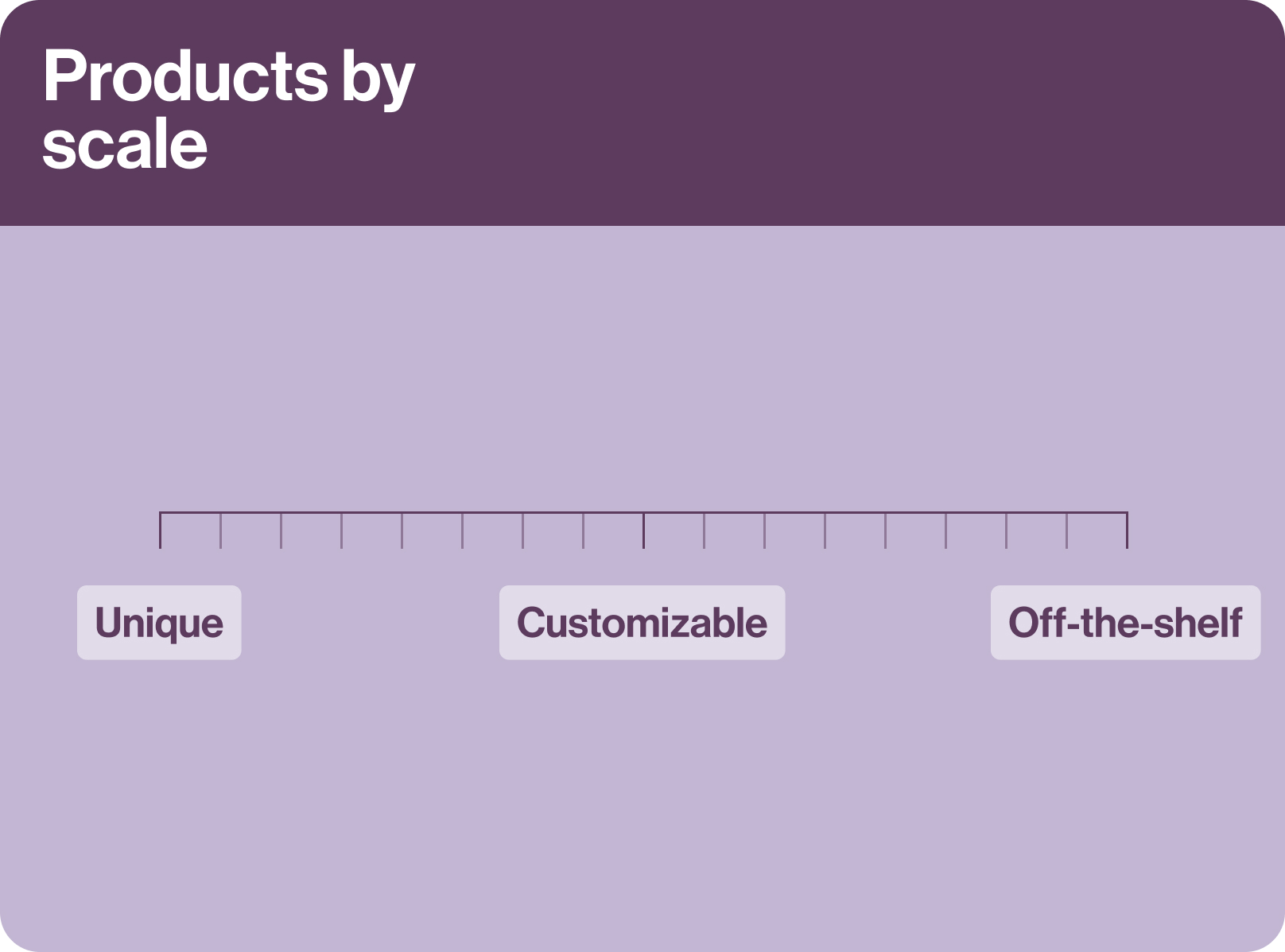
Very rarely does a product fall strictly on one of the poles. Think of an off-the-shelf thing like a bottle of wine: you can’t customize it, but you can buy the same type of wine from the same winemaker but from a different year – a kind of customization. Or think of custom-made furniture. It’s made specifically for you and your living space. But still, there are some components that your carpenter probably re-used from past orders.
Productization is the process of moving your product or service offering to the right.
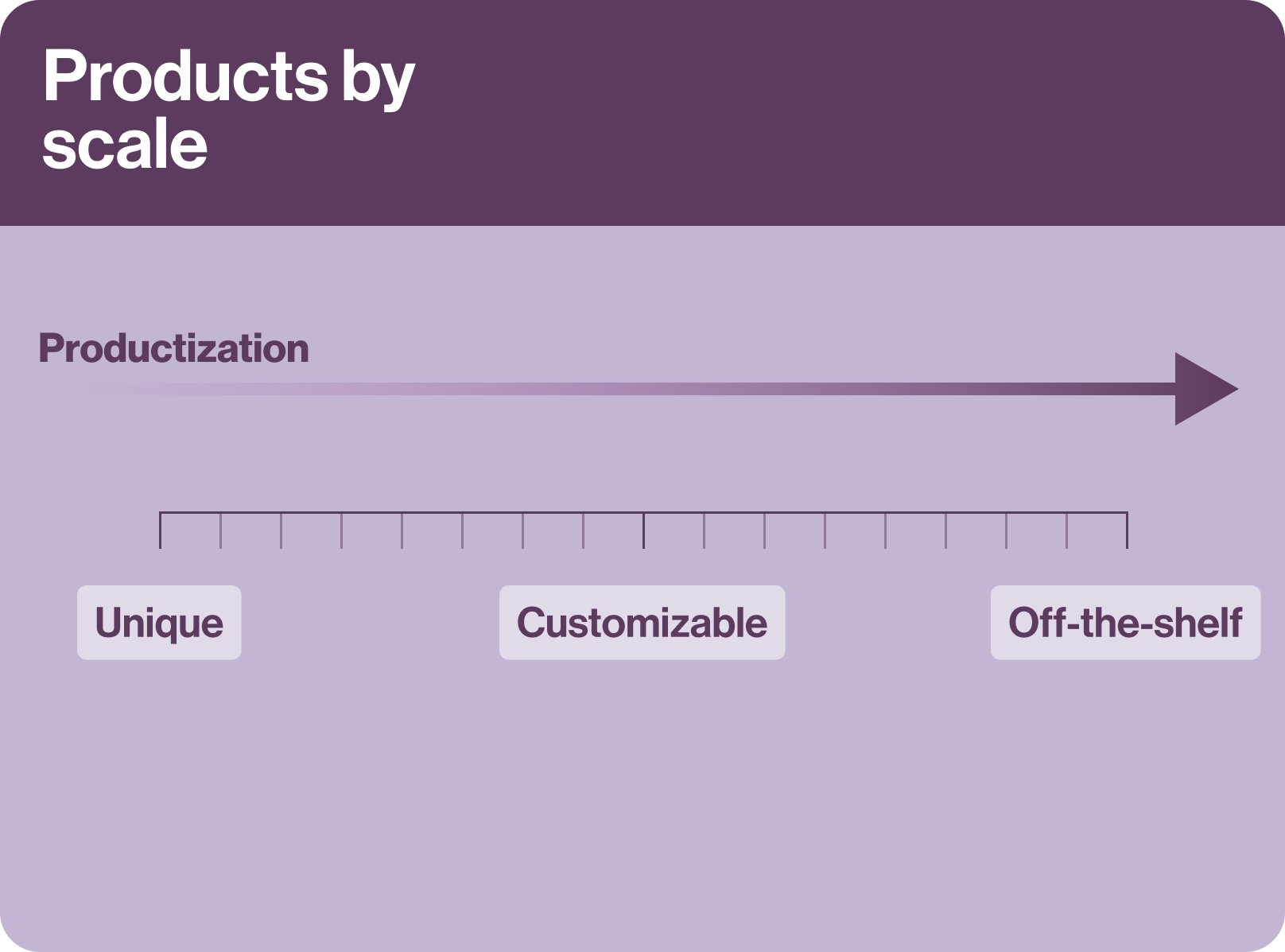
The opposite of productization would be “craftifying.” A made-up word, but you get the gist. It’s about making something less standardized – just think of all the specialty coffee places popping up.
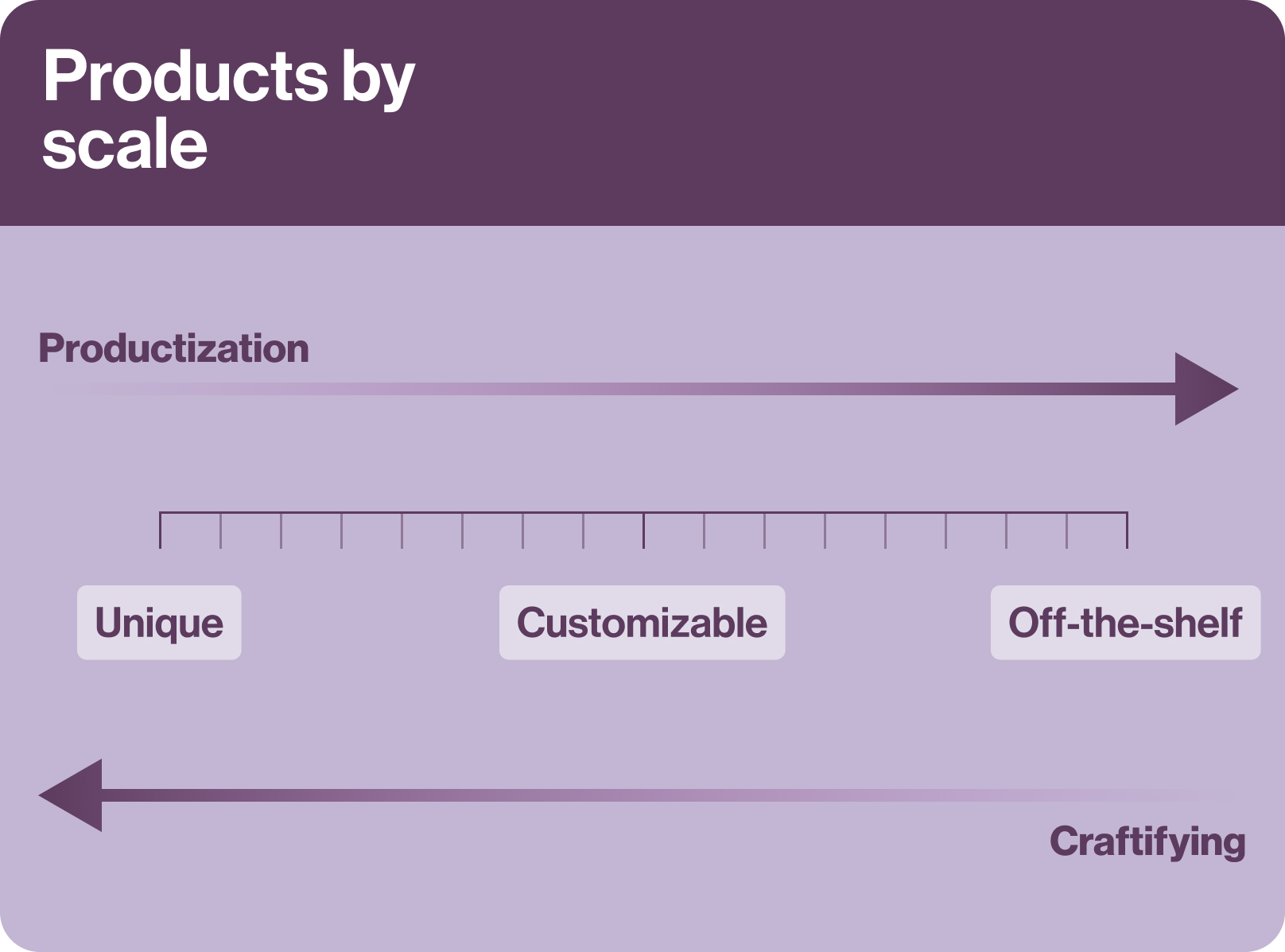
While unique, custom, or just less standard products have their place in the market, productization paves the way to scalability. It allows businesses to streamline operations, simplify production, and reduce costs.
What you get from productization
Today’s startup founders and CEOs are taking a very serious look at the productization of business capabilities. For example, a real estate organization offers mortgage underwriting, and a software consulting company offers cloud architecture services. Both companies could do this for each client individually, or they could look for parts of their service that can be standardized, reproducible, and repeatable.
This is where the business value lies, and great business leaders are always on the lookout for productization opportunities. They know the huge benefits productization can bring.
Scalability
A strong productization strategy enables companies to scale their offerings more efficiently.
Instead of creating bespoke solutions for each customer, businesses can sell a standardized product to multiple customers who likely have the same need, thus achieving every MBA’s wet dream – the economy of scale.
For example, with TurboTax, customers can file end-of-year taxes without needing a professional team. Everything from expense tracking to paperwork and even filing can be done remotely. How long would it take for TurboTax’s employees to collect, prepare, and file taxes for each customer individually? Not to get too technical, but the correct answer is googol years (just google it).
With productization, you can offload some of the work to your customers, lowering your operational costs and boosting scalability. In this example, customers are entering the tax info themselves.
Pricing strategies
A standardized product allows you to use standardized pricing. Instead of estimating, quoting, and negotiating the price every time for every customer, you can show it upfront. If you’ve done a good job defining the product and the value it brings to your target customers, the price will look and feel just right to them.
This doesn’t mean you have to have a single price. You can play around with some impactful pricing models, such as:
- tiered offerings
- subscriptions
- bundles
- trials
By offering multiple products at different price points, you can segment your customers by loyalty and lifetime value, which will allow you to predict future revenue with more reliability.
The software-as-a-service (SaaS) industry has used these strategies to great success. Take streaming, for example; instead of paying per song, movie, or show download, users can pay a flat price for a limited license.
Cost-effectiveness
By productizing your offerings, you can streamline your processes, reduce customization efforts, maximize resource focus, and achieve economies of scale. You don’t need to hire a McKinsey consultant to know that all those things are good for business.
You get lower production costs, improved efficiency, and higher profit margins. For example, Apple keeps its supply chain tight and lean, with only a few types of chips and essentially one operating system, by making products instead of custom offerings. Keeping the moving parts to a minimum, they boost their profit.
Faster time-to-market
Productization eliminates the need for lengthy customization or development cycles, allowing you to bring your product to market faster and capitalize on opportunities ahead of the competition.
Changing or upgrading a product is easier than making one from scratch for each customer. In the digital world, this unfolds on steroids. You can ship changes to your digital product in a few weeks. This way, you’ll quickly learn what works well for your target market and what doesn’t, so you can make changes, ship it again, and repeat the cycle. Repeatable and reproducible, remember?
What your customers get from productization
Productization can work wonders for your business model, but as you’ve probably learned in high school econ, markets are made up of both sellers and buyers. Supply and demand. So, let’s look at the demand side of things: what do customers gain when you productize your offer?
Affordability
Companies pass (some of) the savings from productization on to their customer base. Many people can now afford a marvel of tech called a smartphone because it’s been productized.
Reliability and consistency
Why did you visit McDonald’s on your last trip to a foreign country? It’s simple – you knew what to expect. Productized offerings are often well-tested, and there are rarely unpleasant surprises.
Faster implementation (or delivery)
Since productized solutions are pre-packaged and standardized, they can be implemented more quickly than customized solutions. Customers benefit from a faster deployment and start experiencing the product’s value sooner.
Ongoing support and updates
Productized solutions often come with dedicated support channels and regular updates. Customers can access documentation, training, and technical assistance, ensuring they receive ongoing value and stay up-to-date with the latest features and improvements.
Transparency
Customers can understand the unit of value they’re getting – an item, monthly subscription, number of meals, number of seats, options in the software tool, and so on.
Lower barriers to usage
Things like simplified choice and easier purchase and payment make using products more convenient than going for a custom-made service that involves a lot of ping-ponging between a customer and a company.
What productization looks like in the real world
Productization is all around us. From your vitamin packs to personal care kits, companies and customers are capitalizing on the opportunity to productize more often. Here are some more common examples.
Enterprise SaaS platforms
Companies like Salesforce, Slack, and Dropbox have converted their traditional software solutions into subscription-based services accessible via the cloud. These platforms merge and simplify complex functionalities such as CRM, team collaboration, and file storage, making them easily deployable and scalable for businesses.
Meal delivery services
HelloFresh, Blue Apron, and Home Chef have made home cooking easier by delivering pre-portioned ingredients and recipes to customers’ doors. These productized services streamline meal planning and grocery shopping, offering convenience and reducing food waste.
E-learning platforms
Coursera, Udemy, and Skillshare offer a wide range of courses and tutorials accessible to learners worldwide. By packaging expert knowledge into bite-sized lessons with interactive features, these platforms make learning flexible, affordable, and accessible.
Smart home devices
Companies like Nest, Ring, and Philips Hue provide smart devices for home automation. These devices, including smart thermostats, video doorbells, and smart light bulbs, offer convenience, security, and energy efficiency through remote control via smartphone apps or voice commands.
Digital marketing tools
Introducing productization in your business
Step 1: Define productization target
A strong productization strategy relies upon data and insights into the surroundings of your business.
Start by answering these questions:
- Who are my core customers?
- Where does the majority of my business come from? What offering brings in the most business for my company?
- What unique value do I provide to my current clients? How is this different from my competitors?
- What services and products are my core business competencies? What products and services do I want to avoid?
Rank the volume of demand for each of your offerings and segment the value each offering produces annually for your business. This will tell you what business area drives the most value to your company.
Next, identify which offerings have clear deliverables, pricing, and associated timelines.
Here lies an opportunity to package an offering or offerings into a successful product. If the value between offerings differs between customer types or seasons, try stratifying your products through price positioning with levels or tiers to attract a wider audience. Always keep in mind the average lifetime value of customer segments; don’t chase bigger one-off purchases at the expense of a slow-burn segment. Productization is a long play aimed at creating a sustainable revenue stream from your target market.
Step 2: Standardize
In the next step, work to standardize your most popular offerings. Here’s where the deep knowledge of your work process comes into play – you need to create checklists, templates, repeatable algorithms, and structure for your way of working. What’s the smallest unit of value you can provide to potential customers and reproduce infinitely? That’s where most of your standardization efforts should focus.
Consider adding a subscription or premium offering for your repeat customers. This will help make your revenue more steady, and you can confidently plan your business’s growth.
When providing options to your users, err on the side of off-the-shelf. Four tiers are better than five, three better than four, and ideally, you’d have one or two tiers with some add-ons if applicable. Analysis paralysis plagues customers’ decision-making, and you’ll lose some business and revenue just because you went overboard with options.
Step 3: Innovate, test, iterate
Don’t get complacent. Even if your initial productization effort succeeds, there’s always room for improvement, either by acquiring new users or by entering a new (or adjacent) market.
Gather customer feedback constantly to inform product updates, changes, and new launches. Leverage user interviews, in-app surveys, and standardized customer satisfaction measures like NPS or SUS. Standardized metrics will tell you how you measure up with others without needing to actually survey their users. It’s a neat trick in any product manager’s sleeve.
Iterating is good; shipping often is better. Plan updates (improvements of current features) and upgrades (new features) in small increments that allow you to ship frequently. A constantly improving product wins over a product that grows stale and then releases a huge version 2.0. By that time, people have already moved on.
Ready to start productizing?
Harnessing the power of productization can benefit both your business and your customers. Your current offering might entail a seed of a future iPhone, MS Office, or Mailchimp. All of those started as unique white-glove offerings and then became the staples of their respective industries through productization.
If you need any help figuring out what services you can productize in your business, drop us a line.










